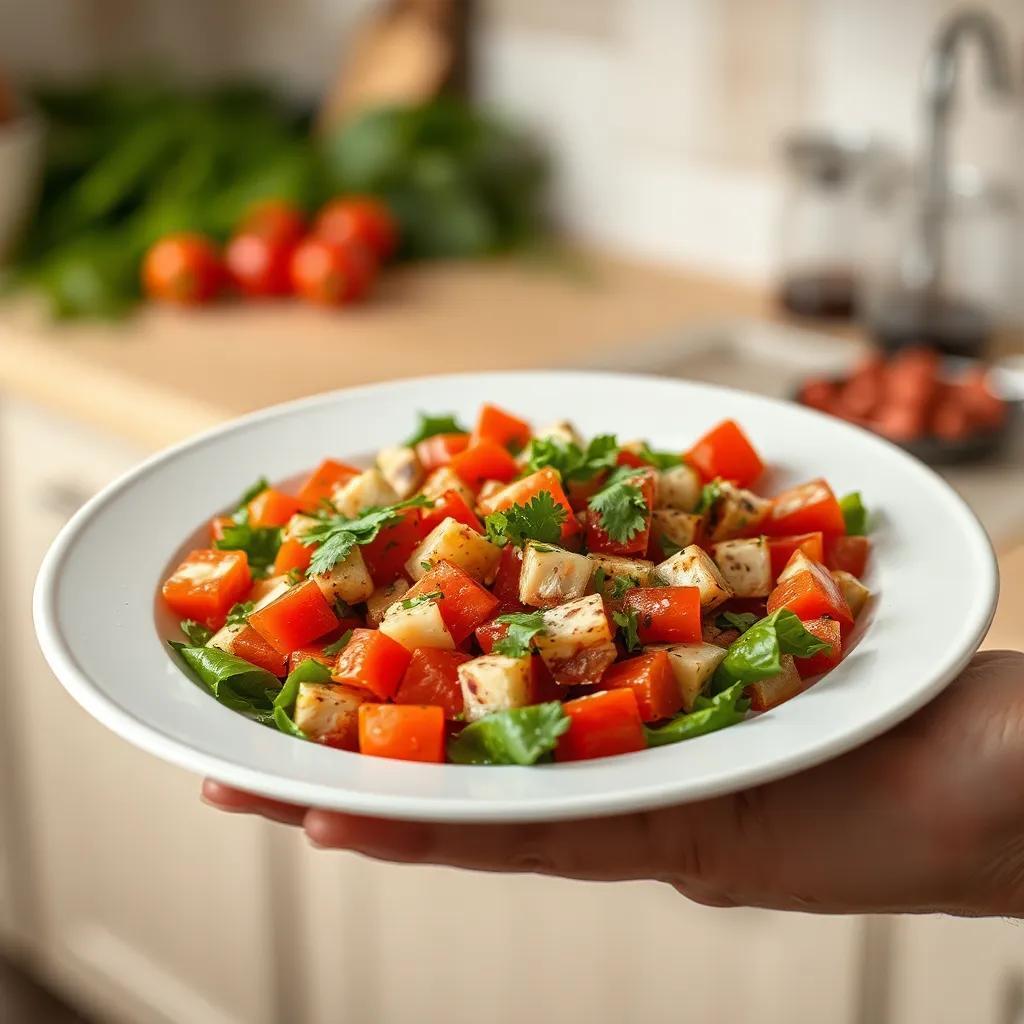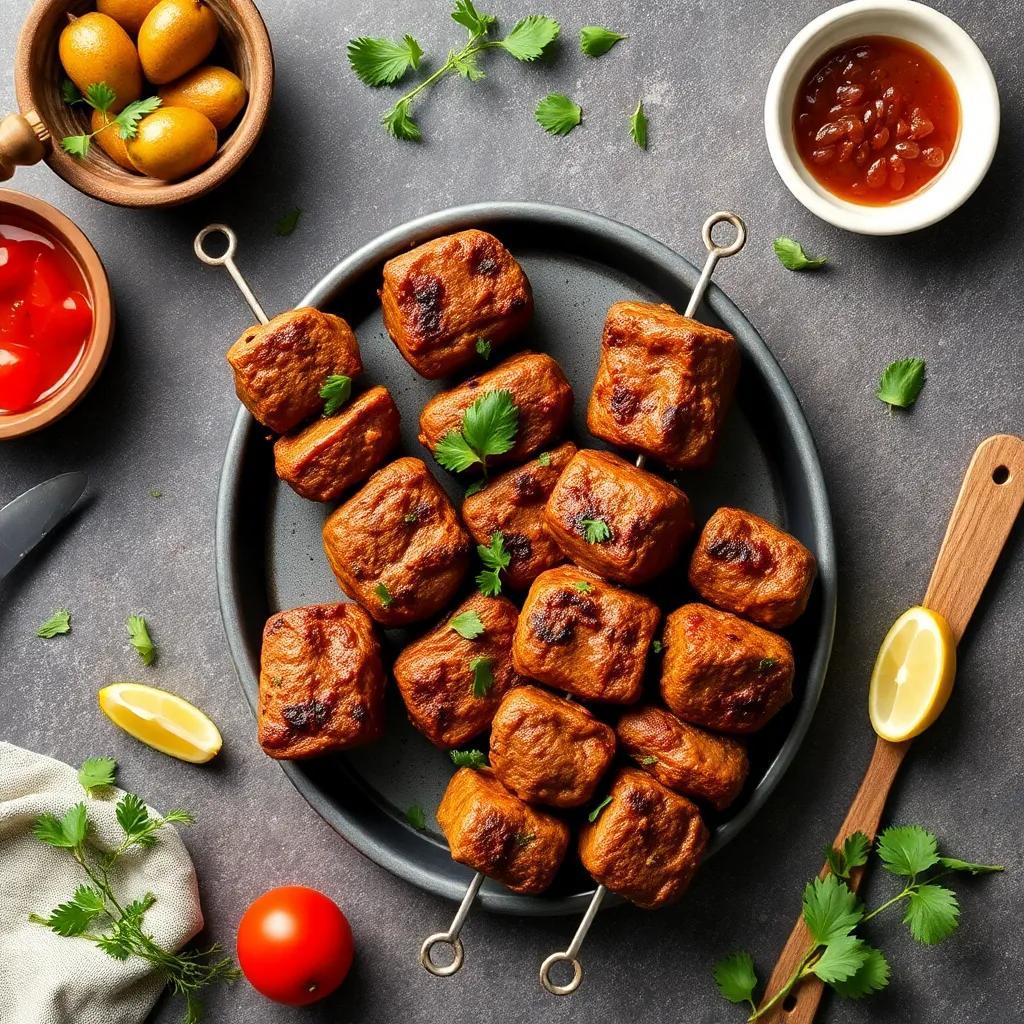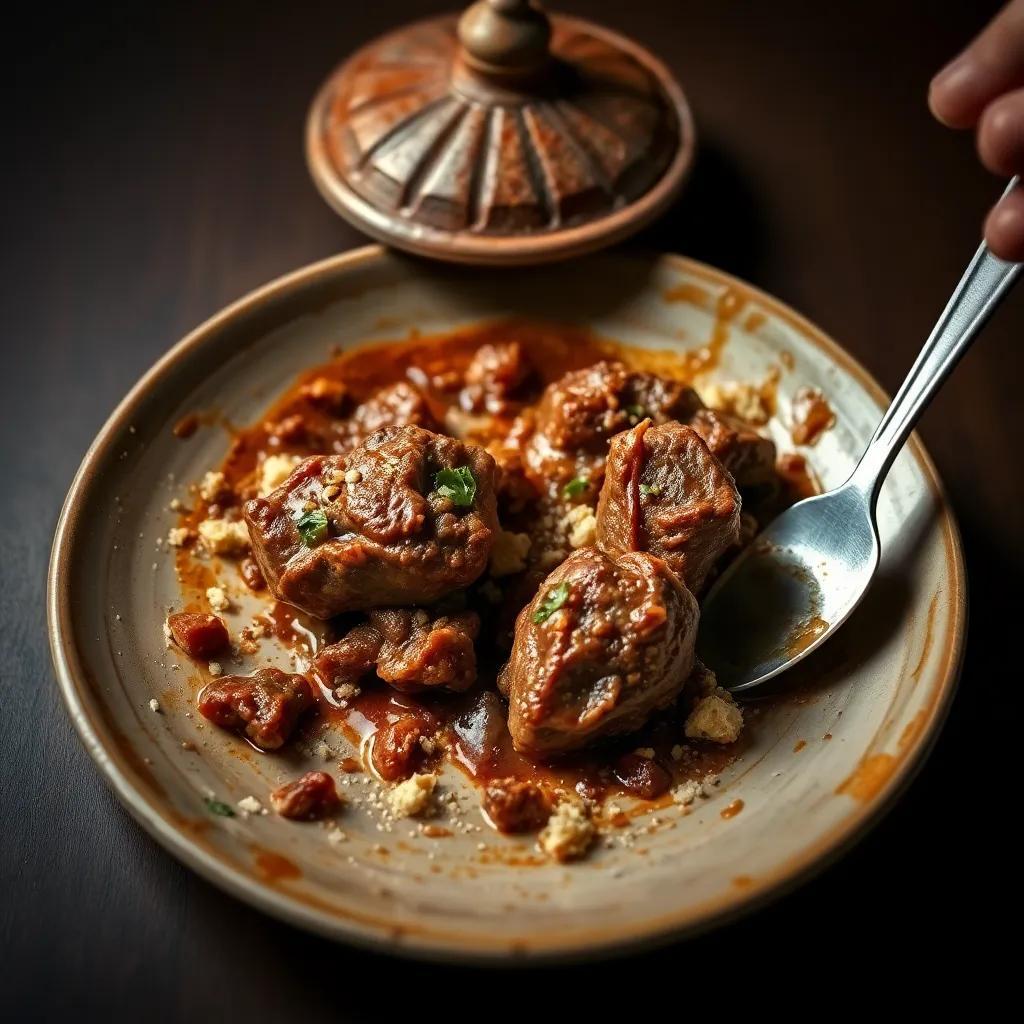Unlock the Secrets: Easy Homemade Shawarma Recipe for Food Lovers

Unlock the Secrets: Easy Homemade Shawarma Recipe for Food Lovers
🌍 Cuisine: Middle Eastern
⚙️ Difficulty: Easy
Ingredients
Nutrition Facts
450 kcal
Instructions
- In a large bowl, combine the yogurt, olive oil, garlic, cumin, paprika, turmeric, coriander, cayenne pepper (if using), lemon juice, salt, and pepper. Mix well to create the marinade.
- Add the sliced chicken thighs to the marinade, ensuring each piece is well coated. Cover and refrigerate for at least 1 hour, preferably overnight for best flavor.
- Preheat a large skillet or grill pan over medium-high heat.
- Remove the chicken from the marinade, letting any excess drip off, and cook in the hot pan for 6-8 minutes per side or until fully cooked and nicely browned.
- While the chicken cooks, warm the pita breads or flatbreads in a separate pan or oven until soft and pliable.
- Once cooked, let the chicken rest for a few minutes, then slice into thin strips.
- Assemble each shawarma wrap by placing a portion of chicken onto the warmed bread.
- Add sliced tomatoes, cucumbers, and onions on top of the chicken.
- Drizzle with garlic sauce or tahini sauce if desired, and sprinkle chopped parsley or cilantro for garnish.
- Roll or fold the bread tightly around the filling to form a wrap.
- Serve immediately while warm, alongside extra sauce or a fresh salad if preferred.
- Enjoy the authentic flavors of homemade shawarma at your table!
Serving Suggestions
- Serve with a side of seasoned rice or couscous for a fuller meal.
- Pair with pickled vegetables or traditional Middle Eastern pickles for added tanginess.
- Accompany with a refreshing cucumber and yogurt tzatziki sauce.
- Wrap in lettuce leaves for a low-carb option instead of pita bread.
- Top with sumac or a squeeze of fresh lemon for an extra burst of flavor.
- Serve alongside crispy fried potatoes or sweet potato fries.
- Add a side of fresh tabbouleh salad for a healthy and vibrant accompaniment.
Table of Contents
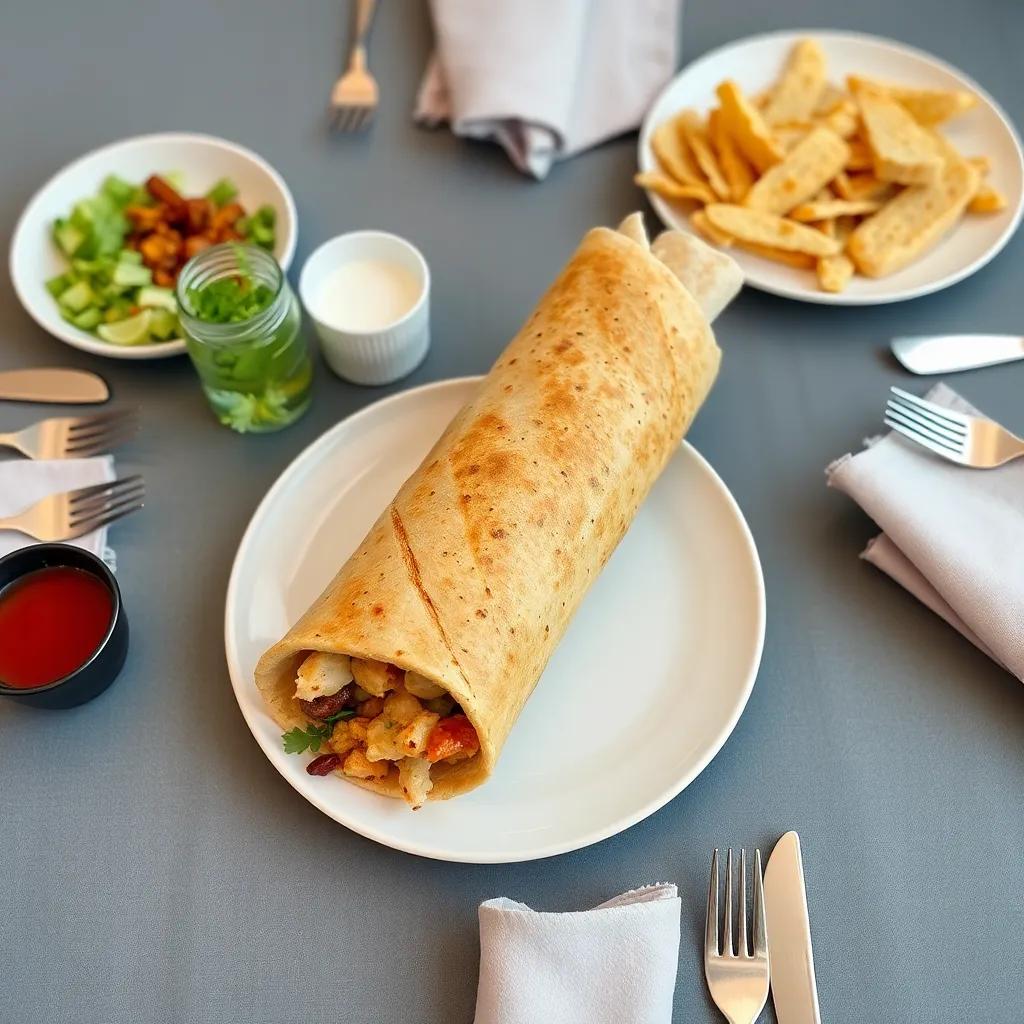
Intro
Craving a flavorful escape to the vibrant streets of the Middle East without leaving your kitchen? This easy homemade shawarma recipe offers just that—a satisfying blend of aromatic spices and tender, juicy chicken wrapped in soft, warm bread. It’s a dish that manages to be both approachable for weeknight cooks and impressive enough to serve when friends and family come together. Whether you’re looking to spice up a casual dinner or add a crowd-pleasing centerpiece to your next gathering, this shawarma recipe unlocks authentic tastes with minimal fuss.
What makes this recipe especially exciting is how it captures the essence of traditional shawarma while keeping preparation straightforward and accessible. The balance of spices enhances the chicken’s natural richness, while the fresh toppings and optional sauces provide multiple layers of flavor and texture. Plus, the quick cook time means less waiting and more enjoying. Imagine wrapping flavorful, herbaceous meat with crisp, fresh vegetables and your favorite creamy sauce—it’s a handheld delight that’s perfect for busy evenings, weekend feasts, or even meal prepping lunches with a Middle Eastern twist.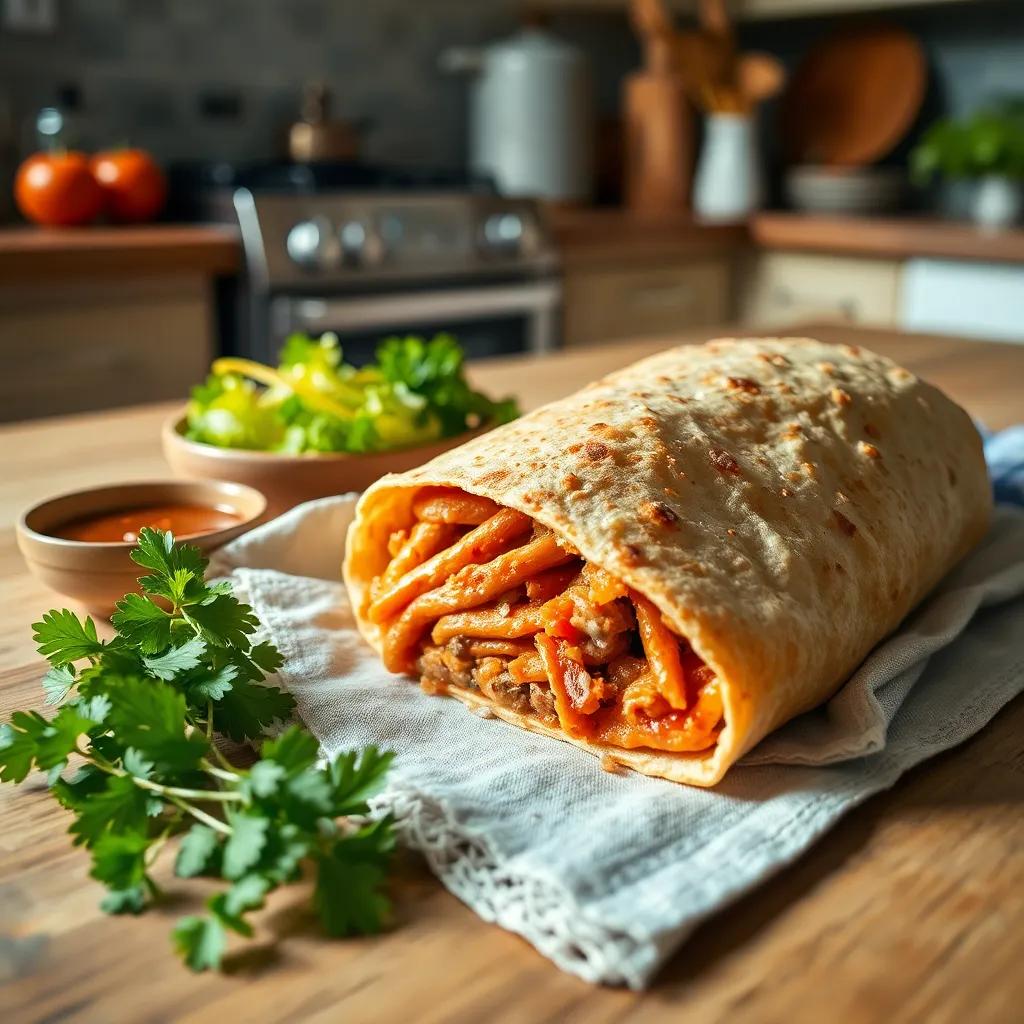
Ingredient Notes
Among the star players in this shawarma recipe, a few key ingredients deserve special attention for the distinctive roles they play in building authentic flavor and texture. Understanding their importance and how to choose or substitute them will help you achieve the best homemade shawarma experience.
Plain Yogurt:
Yogurt acts as more than just a marinade base; its natural acidity tenderizes the chicken, breaking down proteins to create juicy, succulent bites with a delicate tang. When shopping, choose plain, unsweetened yogurt—preferably whole milk or Greek-style for creaminess. If yogurt isn’t readily available, buttermilk or a mix of sour cream and a little water can work as alternatives to maintain tenderness and that subtle tangy profile.
Ground Spices (Cumin, Paprika, Turmeric, Coriander):
The soul of shawarma lies in its spice blend. Using fresh, high-quality ground spices ensures vibrant aroma and flavor. When selecting these, look for deep color and strong fragrance—this usually means they are freshly ground or recently purchased. If you can get your hands on whole spices and toast and grind them yourself, that extra step amplifies the dish’s complexity. If any of these spices aren’t accessible, smoked paprika can substitute for regular paprika, adding a smoky depth, while curry powder might stand in for turmeric and coriander in a pinch, though flavor nuances will shift.
Boneless Chicken Thighs:
Opting for boneless, skinless chicken thighs is a deliberate choice for shawarma’s signature tenderness and rich flavor. Thighs have more fat and connective tissue than breasts, which helps keep the meat moist and flavorful through quick, high-heat cooking. If you prefer white meat, chicken breasts can be used, but be mindful not to overcook them as they dry out faster. Thighs also lend themselves well to thin slicing and absorbing the marinade’s spices evenly.
Fresh Herbs (Parsley or Cilantro):
Finishing the shawarma with fresh chopped parsley or cilantro isn’t just a garnish—it introduces bright, herbal freshness that contrasts beautifully with the spiced meat and creamy sauces. When selecting, choose vibrant, fragrant bunches with no signs of wilting. If you aren’t a fan of cilantro’s distinctive flavor, flat-leaf parsley is a reliable, milder alternative, or try mint for a different herbal twist that remains true to Middle Eastern flavor profiles.
By paying thoughtful attention to these core ingredients, you set the foundation for an exceptionally flavorful and texturally satisfying shawarma, all while keeping the recipe approachable and adaptable to what’s available in your pantry.
Tips & Variations
Mastering the art of homemade shawarma goes beyond following the recipe—it’s about infusing it with your own personal touch and adapting to what you have on hand. Here are some pro tips and creative variations to elevate your shawarma experience, whether you’re cooking for a family dinner or experimenting with new flavors:
- Marinate Longer for Deeper Flavor: While one hour is enough to tenderize and flavor the chicken, marinating overnight really lets the spices penetrate deeply, resulting in richer, more complex tastes. Plan ahead to unlock that full flavor profile.
- Use a Mix of Meats: Don’t limit yourself to chicken thighs. Try mixing in lamb shoulder or beef sirloin thinly sliced for a heartier version. Adjust cooking times accordingly, as red meats may need a bit longer to become tender.
- Spice It Up or Tone It Down: The optional cayenne pepper can be swapped for smoked chili flakes for smoky heat or omitted entirely if you prefer mild flavors. For a subtle warmth without fire, try adding a pinch of cinnamon or allspice to the marinade—these spices add aromatic depth without overwhelming heat.
- Make It Gluten-Free: Substitute traditional pita with gluten-free flatbread or use large butter lettuce leaves as a fresh, crunchy wrap alternative. This also makes a great low-carb option, adding bright texture and a refreshing contrast to the warm, spiced meat.
- Go Vegan or Vegetarian: Swap chicken for sliced portobello mushrooms, cauliflower florets, or tofu marinated in the same spice blend. Roast or pan-fry until caramelized. Serve with the same fresh toppings and sauces to maintain that authentic shawarma vibe without animal products.
- Experiment with Sauces: Although garlic sauce and tahini are classic, try drizzling your shawarma with a vibrant harissa mayo, a tangy pomegranate molasses yogurt, or a zesty amba sauce (a pickled mango condiment) for exciting new flavor dimensions.
- Add Crunch and Sweetness: Incorporate pickled turnips or jalapeños for a tangy, crunchy bite. A handful of toasted pine nuts or chopped toasted almonds can introduce a delightful texture contrast. For a subtle sweetness, add thin slices of roasted red peppers or caramelized onions.
- Toast Your Spices for Extra Aroma: Take a minute before mixing the marinade to lightly toast the cumin, coriander, and paprika in a dry pan. This simple step intensifies their fragrance and deepens the overall flavor of your shawarma.
- Control Moisture for Crispier Meat: After marinating, pat the chicken slices dry before cooking. Excess moisture can cause steaming rather than searing, so drying the meat helps achieve that coveted crispy, caramelized exterior.
- Batch Prep for Convenience: Prepare the marinade and slices of chicken in advance and keep them refrigerated. When ready to cook, simply heat your pan and finish the cooking process in minutes—perfect for busy weeknight meals or quick lunchbox protein.
With these tips and variations, your homemade shawarma becomes a versatile kitchen canvas—ready to reflect your taste preferences, dietary needs, and culinary curiosity. Dive in boldly, and don’t hesitate to make the dish truly your own!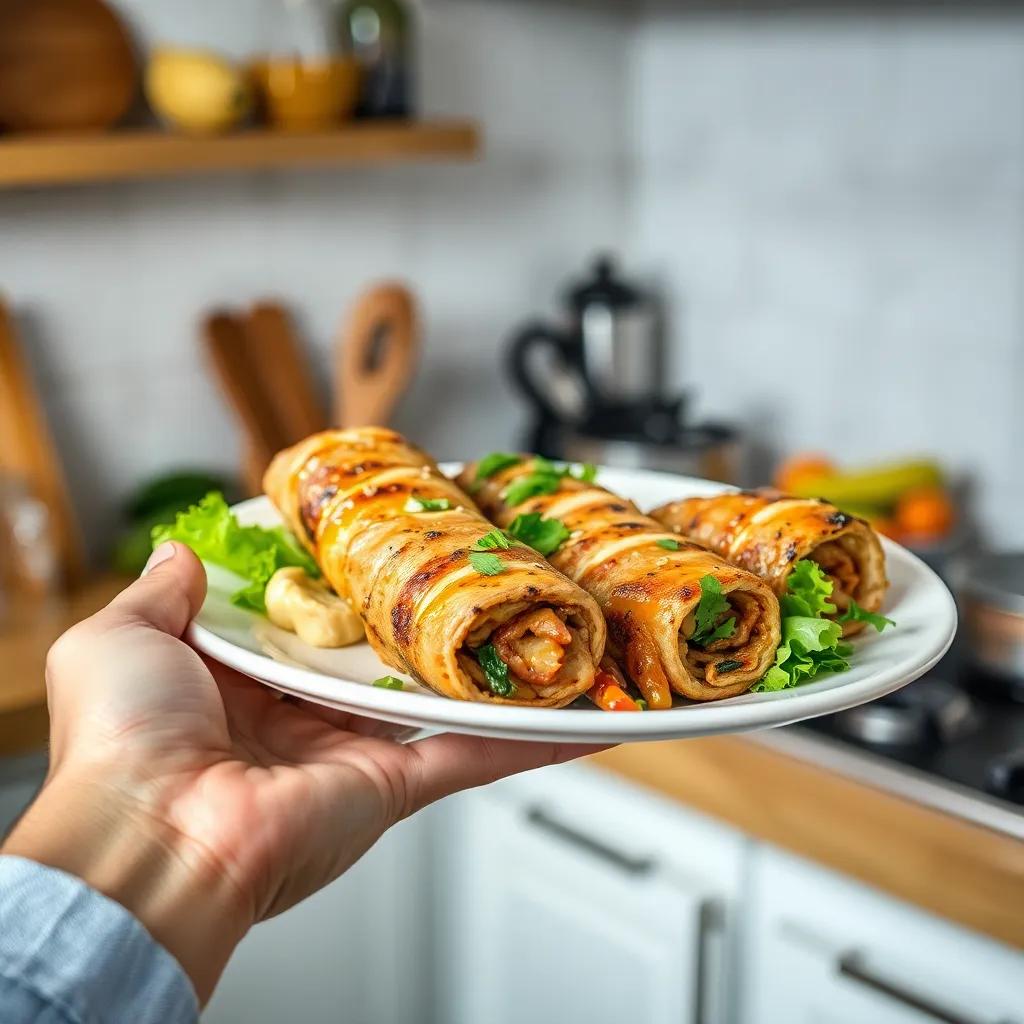
Leftovers & Storage
Leftover homemade shawarma is a wonderful bonus—packed with vibrant flavors and tender, spiced chicken that can easily be enjoyed beyond the initial meal. To keep your leftovers tasting fresh and delicious, proper storage is key.
Start by letting the cooked chicken cool to room temperature, but don’t leave it out longer than two hours to avoid food safety risks. Once cooled, transfer the chicken into an airtight container. Glass containers with tight-fitting lids work best as they prevent odors from escaping and keep the meat moist, but BPA-free plastic containers or heavy-duty resealable bags also do the job well.
Refrigerated leftovers should be consumed within 3 to 4 days. When ready to eat, gently reheat the shawarma chicken in a skillet over medium heat or in the oven at 350°F (175°C) until warmed through, which helps maintain the crisp edges while keeping the inside juicy. Microwaving is convenient but can sometimes make the meat a bit rubbery, so if using a microwave, cover it loosely with a damp paper towel to preserve moisture.
If you want to store the chicken for longer, freezing is a great option. Portion the shawarma meat and place it in freezer-safe containers or heavy-duty zip-top bags—removing as much air as possible helps prevent freezer burn. Properly stored, frozen shawarma can last up to 2 months without significant loss of flavor or texture. To thaw, move the container to the refrigerator overnight then reheat as mentioned above, or use a gentle defrost setting on your microwave.
Leftover pita breads or flatbreads should be wrapped tightly in foil or plastic wrap and can be kept in the refrigerator for 2–3 days or frozen for up to a month. When ready to use, warm them in a dry skillet or oven to bring back their soft, pliable texture—avoid microwaving as it can make the bread chewy or gummy.
Beyond simple storage, leftovers lend themselves wonderfully to meal prepping. Prepare your shawarma chicken in bulk, store it in ready-to-go containers, and pair with fresh chopped veggies and sauces on the side. This approach saves time on busy days while keeping your meals flavorful and satisfying. You can also repurpose leftovers into creative dishes—stuff the chicken into salads, layer it over rice or couscous bowls, or even toss it into wraps with different sauces for a quick lunch variation.
By following these practical storage and reheating tips, your homemade shawarma will maintain its mouthwatering charm and continue to delight your taste buds long after the cook time ends.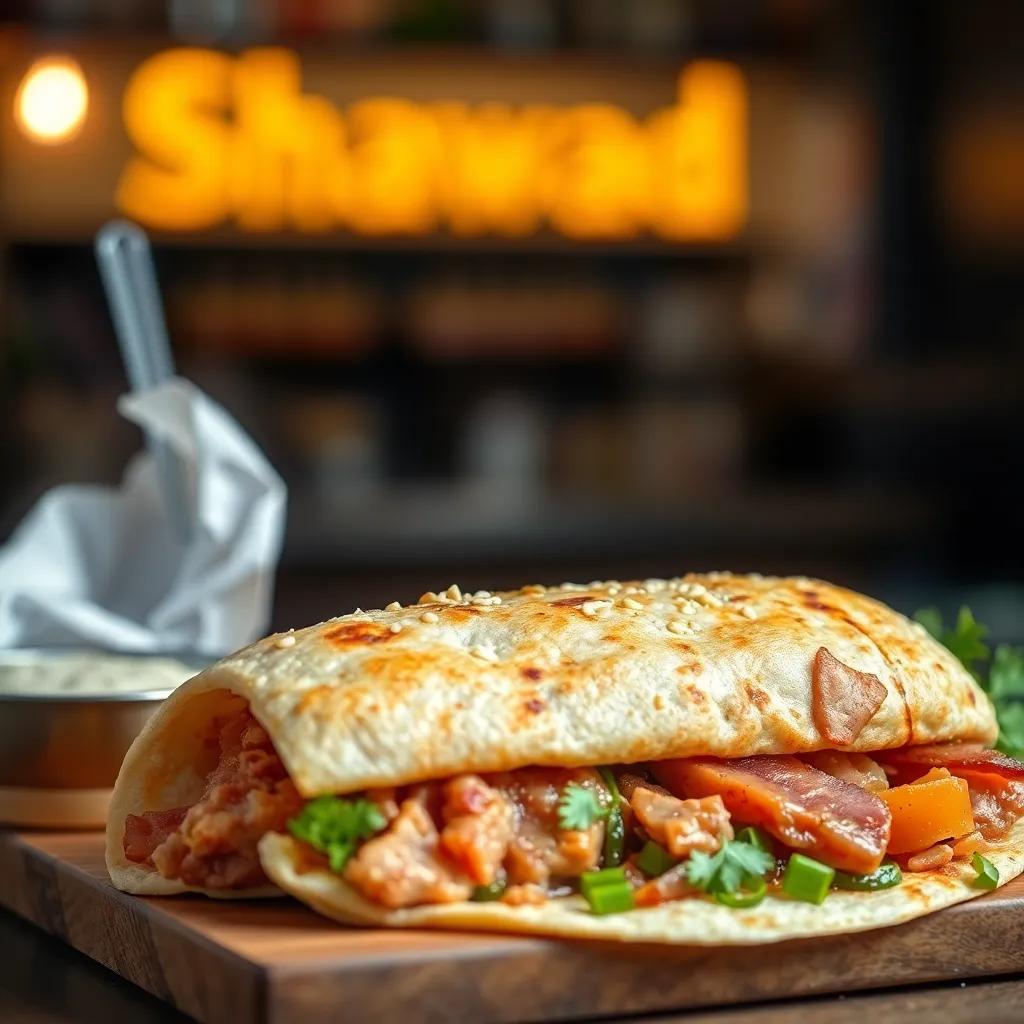
Behind the Recipe
Shawarma is more than just a delicious street food—it’s a culinary tradition steeped in centuries of Middle Eastern history and culture. Originally inspired by the Ottoman-era doner kebab, shawarma found its unique identity as a flavorful and portable meal sold by street vendors across the Levant, North Africa, and beyond. The method of marinating thin slices of meat in a vibrant blend of spices and cooking them on a rotating spit allowed busy city dwellers to grab a warm, satisfying bite at any time of day.
The recipe presented here captures that spirit of accessibility and bold flavor while adapting to modern home kitchens without the need for special equipment. The choice of boneless chicken thighs echoes authentic shawarma’s tender and juicy essence, and the mix of spices reflects time-honored combinations that have been passed down through families and food markets alike.
On a personal note, this recipe was born from a fascination with those bustling Middle Eastern street stalls—the aroma of cumin, garlic, and smoky paprika mingling in the air, the sight of thin meat layers slowly caramelizing on the spit, and the warmth of fresh flatbread wrapped around vibrant veggies and creamy sauces. Translating that experience into a simple, easy-to-follow recipe meant balancing authenticity with convenience, inviting home cooks to bring a taste of that vibrant street food culture right to their tables.
Ultimately, shawarma is a celebration of bold spices, community, and comfort. Whether enjoyed during a casual family dinner or shared among friends at a lively gathering, this homemade version invites you to explore a treasured culinary tradition and make it your own—one fragrant, juicy bite at a time.
FAQ
Can I use a different protein instead of chicken for this shawarma?
What’s the best way to store leftover shawarma?
Is it possible to make this recipe gluten-free?
Can I prepare the marinade ahead of time?
How do I reheat frozen shawarma without losing flavor?
What are some easy side dishes to serve with homemade shawarma?
Wrapping It Up
And there you have it—a simple yet flavorful shawarma recipe that brings the vibrant tastes of the Middle East right into your kitchen. Whether you’re a seasoned chef or just a food lover eager to try something new, this homemade shawarma promises a satisfying, aromatic experience that’s sure to become a favorite.
Now it’s your turn to take these flavors for a spin! Give the recipe a try, tweak it to your liking, and don’t forget to share your culinary adventures in the comments below. We’d love to hear your twists, see your ratings, and celebrate your delicious creations together!










